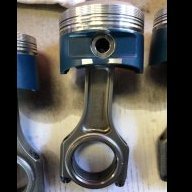Announcements
-
Similar Content
-
Latest Posts
-
By Dose Pipe Sutututu · Posted
haha this shit box doesn't drink coolant, for now Let me guess, they make heaps of power, use the car for straight line driving and don't care about noise -
They’re so great that I know of someone pulling one out to go back to a sequential
-
Hello everyone. I've recently started the research into R34 GTR front bits and running into eye watering prices. On the plus site it looks like some places make 'replacement' fender liners for these cars. At eye-watering-but-less than stock prices. I also noticed there's plenty of diffuser options available too. What I would like to know is if my following assumptions are correct. 1) The OEM guard liners are actually only 'half' the liner. They go together with the OEM brake vents which are a separate item which looks to be quite a large 'panel' that is part of the liner. The GTR bumper has bolt holes along the front. I assume the ones in the vent correspond to the ones the OEM liner does not have (circled?) 2) The V-Spec front diffuser supplants the brake ducts in the above item. I am assuming these still work with the guard liners as there's no alternate part that I'm aware of. I don't see how they go together, so I'm making the assumption that they have to, somehow. I know the center splash guard is different on the V-Spec (and is the price of the damn diffuser alone). How does the liner interact with this? 3) There's alternate front diffusers that do away with it all. Annoyingly, a lot of the clones and CF different ones... have no brake ducts on them. I like the idea of them though. My brakes get hot on the track. These alternate diffusers are a lot cheaper than plastic splash guards. I'm assuming you don't have to/aren't supposed to remove guard liners to run a diffuser. I suspect that quite a few people actually do not run the guard liner because with a front undertray you're getting a lot of 'splash' guarding anyway, and most people remove liners given they're probably running a pretty aggressive setup with a diffuser at the front. It would also be nice to know if anyone has ever run the 'reproduction' guard liners and know whether the fitment is OEM quality or "OEM Quality". Example: https://www.ebay.com.au/itm/356254671561 https://carbonetics.net/products/nissan-skyline-r34-gtr-plastic-front-wheel-arch-set Is this knowledge still around?
-
Really, effort is pretty low. You hand fistfuls of cash over to someone else and pick it up when done... And at least this shitbox isn't drinking coolant right?
-
And most chargers that most DIY people own would put bugger all power back into the battery between cylinders. I've always done it with jumper packs/second battery connected. And that's on any car. Because race car, and wanting the lightness. At least in an R33, putting a bigger battery in can at least help shift the weight balance backwards
-







Recommended Posts
Create an account or sign in to comment
You need to be a member in order to leave a comment
Create an account
Sign up for a new account in our community. It's easy!
Register a new accountSign in
Already have an account? Sign in here.
Sign In Now